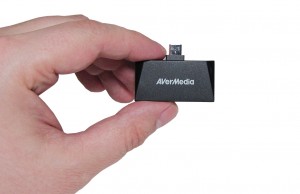If IBC 2016 showed anything, it’s that too many broadcasters, operators and content owners still have their heads stuck in the sand when it comes to consumer needs, desires and demands. Much of the industry — especially pay-TV operators — maintain an unrealistic hope that consumers will “come to their senses,” return to the fold andthat they’ll essentially step back in time. In discussions at IBC, it was painfully obvious that as the industry’s disruption demanding more collaboration to keep pace with accelerating change, too many companies are looking to maintain the status quo.
I’ve long said that content’s reign as king of the industry’s food chain is over, that the consumer has taken control, prompting major changes in how content is distributed, monetized and consumed. Nothing proves that point more than the rush by major media companies in the past 18-months into the highly lucrative — for those companies that find the right balance between content and consumers — SVOD space, even as it looks for ways to evolve its traditional ad-based online model (more on that later). As NBCUniversal CEO Stephen Burke has said, “Our relationship with Netflix has never been better. They’re a huge purchaser of our content (and) we talk to them all the time. (SVOD) is a good thing for Comcast Cable and it’ll be a good thing for NBCUniversal.”
MAINTAINING HEALTH AMID DISRUPTION IN THE INDUSTRY
Global media properties remain profitable, but increasingly are accepting — after initial reluctance — that the industry is undergoing a seismic shift that already is generating a newlandscape. Among the biggest players, EBITDA margins remain high, with companies like Liberty Global, Scripps Networks, Discovery Communications, Televisa, TVB, Comcast, Disney and SBG all reporting percentages in the 30-44% range. To maintain that earnings health, more media companies — from broadcasters to publishers to brands — are experimenting with how they connect with consumers and are looking for opportunities to expand their footprint to a more global one, rather than a regional one.
Many have aggressively moved toward direct delivery in an effort to disintermediate much of the traditional supply chain. Numerous panels and presentations talked about direct-to-consumer options that focused on the public’s increased predilection toward mobile screens, both smartphones and tablets, especially among today’s primary audience (Millennials) and tomorrow’s (Gen Edge).
Short-form content, live news, sports and music, more originals from new content producers like Netflix, Hulu and Amazon Prime and other non-traditional content suppliers also had significant roles in the show. Augmented and virtual reality, the benefits of ultra-high definition content versus the less costly (in terms of production and bandwidth needs) high-dynamic range content and, of course, the increasing demand for accurate measurement on all platforms were high-volume issues.
There were nearly 56,000 visitors to IBC this year, the largest number the show has seen. Here’s a look at some of the trends they were most interested in and what that means for the future.
OVER THE TOP IS NOW MAINSTREAM, FOR THE MOST PART
Over the top is no longer an “us and them” theme, but, rather a confluence of interests among broadcasters, operators and content owners. After all, much of the traditional audience has gone over the top — it’s estimated nearly three-quarters of U.S. TV homes, for example, subscribe to at least one video on-demand service. The industry has no choice but to follow. As Ricky Sutton, CEO of Oovvuu, an ad-funded video on-demand and ad tech company, said, the majority of broadcasters have accepted — and evenembraced — digital disruption. Increasingly, subscription-based services, ad-based services and transaction-based services have gone from money-losing experiments to businesses that generate substantial revenue streams.
But Dominique Delport, MD Havas Media/Chairman of Vivendi Content, warns that while he is certain OTT will become ubiquitous, he estimates it could be a $15 billion global business by 2018, some media companies will face significant travails as the transformation occurs. “SVOD and OTT is the equation but you need to be backed by pay TV and you need to leverage content production and ad deals,” he said. “Mass marketing has been a winning formula for 50 years — but the party’s over. In the advertising and retail world we are moving to a direct to consumer model and this is exactly what the media and technology world is facing — go direct or trust the middle man.”
Delport predicts that familiar media brands will disappear — as many as 75% of them — in coming years as larger companies scoop up smaller ones. “It is winner takes all. You can’t win alone,” he said. “There is a revolution in media. Everyone will buy everyone else.It will be ugly and only the giants will survive.”
SOFTWARE AS A SERVICE
Evident in the various halls at IBC this year was an increasing focus on software supported networks and SaaS models, which vendors are rapidly introducing as they move away from more traditional hardware solutions. Vendors like Cisco, Ericsson, Imagine Communications and others are moving full speed into offering software supported networks, promoting the flexibility that comes from not having to manage multiple racks of hardware. Imagine Communications CEO Charlie Vogt said the industry is rapidly transforming into one based on “defined by software and one that’s defined by IP,” something he calls the “next phase of this industry.” The reason? As companies virtualize some part or all oftheir network functions, change becomes easier. The conference saw far less hype related to the technology than in years past, with more vendors able to highlight implementations and share demonstrations about what’s available.
Change in the media industry, Vogt said, “is being driven by the Internet.” It’s changing business models, the go-to market models for companies and allowed OTT platforms to be huge disruptors in the space. “It’s changing the way our traditional (broadcast and operator) customers think about going to market.”
At NAB, Vogt said he thought “customers are terrified” at how they would monetize their business in the future. “They are looking out two, three, four, five years and they are looking at companies who have taken advantage of the Internet… (It’s) changing and the underlying technology that’s required for them to participate is going to change.”
It’s a familiar theme.
Three years ago, during a panel at IBC that maintained thatcontent owners would never want to — or be able to easilyand economically — go directly to consumers, Vogt asked “Why not?”
“Today, they’re all going direct to consumer because today the consumer is — for the first time — the ones that are really driving the consumption of the content and in control of how they want to consume it.”
That’s produced a major change in itself. Content owners are changing the game because they can be in direct competition with traditional delivery systems by going direct to consumers. That’s also creating more opportunities for video platforms. Where media companies in the past sometimes had been reluctant to move to software-based delivery partners, they are more frequently looking to the cloud, and the companies that live there, as they try to innovate in thespace, launching new business models and iterations of their content play quickly. Being able to offer rapid time-to-market quickly is becoming a killer app in the video delivery segment.
Where media companies in the past sometimes had been reluctant to move to software-based delivery partners, they are more frequently looking to the cloud, and the companies that live there, as they try to innovate in the space.
USER INTERFACE AND USER EXPERIENCE
User interfaces and the user experience remain huge pain points for consumers — and for services looking for ways to reduce customer churn and increase consumer engagement. UI and UX were used interchangeably as vendors talked about the need to make sure users came first… no matter what; consider it another manifestation of theconsumers seizing the high ground that used to belong to content.
UI took center stage during IBC, with numerous companies sharing their visions of future trends. Look to see more graphical interfaces, as the text-heavy tiles that originally defined apps are retired and search and discovery move up the ladder.
“TV is reinventing itself over and over,” said Sacha Prueter, head of Android TV at Google, who notes that it’s becoming harder to keep a content grazing consumer engaged as the content universe expands. “Companies will have to learn how to innovate quickly and leverage device types to fit specific viewer expectations and experiences,” he adds.
Along with more immersive graphical experiences, voice also is coming to the forefront. “(Comcast’s) Xfinity is spending an obscene amount of money to get the consumer to talk to his box,” Michael Hawkey, SVP & GM for TiVo’s discovery business group, said. But making voice truly functional has a long way to go. “Users shouldn’t have to talk in a keyword friendly order to get what they want because that isn’t natural,” he insists. Instead, developing UIs that understand natural language — and its syntax — will be key.
It’s not hard to see that today’s TV viewing experience has become more fragmented. Broadcast TV, traditional pay TV with dozens of broadcast and cable network choices, SVOD services, AVOD and freemium services, TVOD, EST and any combination of the above have served to create a massive queue of content. Hardware, including SmartTVs, tablets, smartphones, Roku boxes, Apple TVs, Amazon Fire TV sticks, Chromecasts and other devices has added to that tangle, as well as adding to the pile of remotes that clutter coffee tables and can create Goldberg-esque content search and discovery rituals. The next generation of UI will have more in common with today’s nascent heads-up-display (HUD) technology that’sbegun to appear in cars — graphical displays on a windshield that show traffic conditions with lane colors, a driver’s speed, road conditions and the route to a destination without being distracting — than they do with current electronic guides. And they’ll be more immersive than guides like those of SVOD services like Netflix offer.
As Trisha Cooke, chief of marketing for Canadian user interface specialist You.i said: “There’s no better business,” as long as you can seamlessly connect consumers with content… without getting in the way.
A ROOM WITH A (DIFFERENT) VIEW
Just six years ago, IBC featured a number of panels on the coming 3D boom; booths featured multiple monitors showing 3D content to visitors wearing an array of 3D glasses and camera manufacturers presented live display that, literally, stopped traffic.
That boom went bust in less than two years as consumers essentially yawned (or gagged) at their experience. Fast forward a couple of years and UHD/4K sets — some of them massive — attracted similar queues of viewers eager to get a close up peek of the technology, learn about the massive bandwidth required to deliver UHD content, gawk at the (too) clear close ups of and gasp at the prices. This year, UHD took a backseat to virtual reality at IBC, becoming almost passé as 4K content creation is becoming the norm and more operators start to offer 4K services. While not yet ubiquitous, the industry is convinced that UHD will become the norm in the very near future, likely leveraging HDR technology. The star of the show — obvious to anyone who walked through the halls — was VR. Booths with VR headset wearing visitors were packed as demonstrations targeted at gamers, sports fans and the general entertainment industry ran their course to oohs and aahs.
Interestingly, concerns that VR would meet the same fate as 3D — where users just weren’t keen on wearing goofy glasses while watching content that wasn’t necessarily better in 3D — are few.
In the weeks after IBC, several major firms invested in the technology and analyst firms forecast huge sales within the next few years, a time frame that’s crucial to VR’s growth, said Alex Mahon, managing director of The Foundry. “If we look maybe two hardware cycles on, then VR will be massive,” she said. “So, two hardware cycles — that’s probably three or four years — then we’ll see tens of millions of people with headsets because by then the headsets will be less invasive. They’ll be simpler to hook up to a computer system, more like a pair of glasses and a phone.”
The next generation of UI will have more in common with today’s nascent heads-up-display (HUD) technology that’s begun to appear in cars — graphical displays without being distracting than theydo with current electronic guides.
VR and augmented reality, rather than simply making content pop off the screen, actually immerses the viewer in the content, giving them the ability to alter their viewing perspective and, in some cases, to almost interact with the content as if they were actually there.
While gamers likely will be the earliest adopters — that where most of the current content is — there will be other formats that follow quickly, with sports one of the favorites.
Still, doubt remains, in some quarters. The DVB project’s chair, David Wood, is taking a slightly more cautious approach, asking at IBC whether VR would be a fad or an important, new, commercially successful media form? “Will it be possible to minimize motion sickness and what kind of content, and of what duration?” he asked.
MEDIA REVENUE MODELS CONTINUE TO TRANSITION
The 2016 Rio Olympics were eye opening for Comcast and NBC. The audience it expected failed to show up. At least the traditional audience it expected. But the network said the 30% shortfall in eyeballs it experienced during the Summer Games on television was almost completely offset by the 50 million viewers who streamed 3.4 billion minutes of action — and ads — on the Internet. The bulk of viewers, it said, were under the age of 35.
The fragmented audience 100-200 cable channels had created has been further fragmented by online video options that are a magnitude — at least — larger. Welcome to the new reality — and complicated mathematics — of new TV.
“It used to be all advertising,” said Andrew Neil, a publisher and broadcaster from the United Kingdom. “The new model is the diversification of revenues.”
Where revenue models once made up a simple pie of advertising dollars, pay-TV subscription fees, public funding (in the case of public broadcasting) and retransmission and carriage fees, operators, broadcasters and content owners now face a more complex recipe, one that includes multiple content licensing fees. For operators who stream content, monetization options also include ad-based and subscription-based versions, as well as transactional rentals and electronic sell through.
Increasingly, traditional and streaming providers are testing the waters on SVOD, AVOD and TVOD in a hybrid scenario that sometimes leverages content release windowing and subscription perks designed to reduce churn and create additional revenue streams.
“It’s become most important to have multiple revenue streams,” said Susanna Dinnage, EVP & MD of Discovery Networks U.K. & Ireland. “In terms of advertising, it’s fast becoming more personalized. Programmatic is the future moving forward. More personalization will lead to more conversion.”
ANALYTICS, MEASUREMENT AND DISCOVERY
At the core of the video industry is data. “The nirvana for the TV industry is knowing who’s watching, what they do next,” said Tom Toumazis, Chairman of TVbeat/NED TheLADbible Group. “On a digital platform, they know it… what we’ll see in the future is a rapid change in the way advertisers and agencies demand to know more about what consumers do after they see an ad.”
Added Phillip Luff, MD Scripps Network UK & EMEA: “We can never have enough data. It’s all about understanding your audience and monetizing that.” Luff pointed out that HGTV works with brands like Wayfair to integrate product into programming, a not-so-subtle reinforcement for the retailer. Analytics also can drive engagement with content, if it’s personalized effectively, delivering more relevant content recommendations, making search and discovery easier to use and more productive.
“Discovery of content has to be as compelling to do as content is to watch,” said Michael Hawkey, SVP & GM for TiVo’s discovery business group. “It’s consumer driven. B2B4C. It is about the consumer. If you don’t listen to the consumer first… regardless of age or device they watch on” you won’t succeed. “You need to pay attention to what they want. How they use it, take the feedback you get.”

















